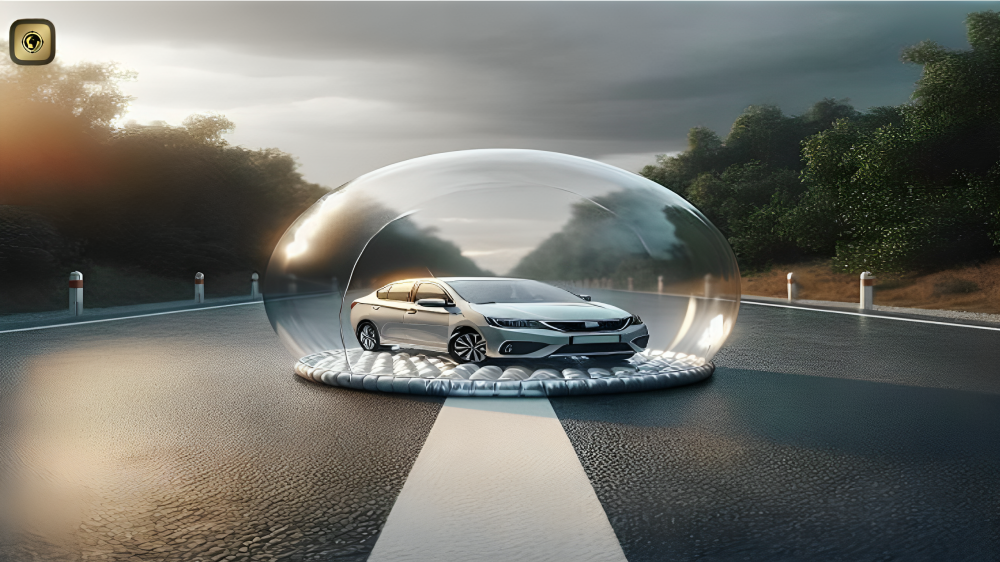March 29, 2025
- The car hood is an essential component of the vehicle, serving as the protective barrier for the engine and other crucial systems located in the engine compartment. Located at the front, it ensures that these vital components are safeguarded from external elements such as dirt, debris, and severe weather conditions.
- A well-kept hood effectively protects the engine. Furthermore, you can consider an engine protection add-on with comprehensive car insurance to address financial liabilities related to damage to engine components.
Importance of a Car Hood
- The car hood is not merely a structural enhancement; it plays a crucial role in the vehicle’s overall functionality and safety. Let’s delve into its importance in detail:
- Protection for Internal Components
The car hood serves as a barrier, safeguarding essential engine components from harm, dust, and moisture. This critical shield prevents outside elements from disrupting the engine’s operation, ensuring the reliability and durability of a vehicle’s mechanical systems. - Aerodynamics
A well-designed hood decreases air resistance, facilitating smoother airflow over the car’s body. This enhancement in aerodynamics results in better fuel efficiency, greater speed potential, and enhanced stability during high-speed driving. - Heat Dissipation
To avert engine overheating, many hoods are constructed with built-in vents or scoops. These features improve airflow to dissipate heat effectively, ensuring the engine’s peak performance. This characteristic is particularly significant for vehicles functioning in extreme weather or high-performance conditions. - Noise Reduction
Contemporary hoods frequently incorporate sound-dampening materials that help lessen engine noise. By minimizing vibrations and sound infiltration into the cabin, these hoods enhance the overall driving experience, providing a quieter and more comfortable setting for passengers. - Ease of Maintenance
A car hood’s hinged design is essential for accessibility. It enables straightforward opening, providing access to the engine compartment for maintenance, inspections, and repairs. This practical characteristic streamlines routine maintenance, benefitting both car owners and mechanics alike.
Different Shapes of Car Hoods
Below are some typical shapes of car hoods: - Flat Hood
It is favored in sedans and compact cars due to its smooth, minimalist design. It presents simplicity and a clean aesthetic that attracts many car lovers. This design allows for easy modifications, making it a versatile choice for various customization options. - Power Bulge Hood
It is defined by a raised center section intended to accommodate larger engine blocks. This hood style is often seen in performance vehicles and provides an assertive and sporty appearance. It enhances the car’s visual appeal and facilitates improved airflow to the engine, aiding in better engine cooling. - Cowl Induction Hood
It includes a raised portion near the windshield, which enhances airflow into the engine compartment. This boosts the engine’s performance, especially in high-performance vehicles. The cowl induction hood is well-suited for sports cars and performance-focused machines, offering both functional benefits and a distinctive design feature that stands out on the road.
Different Car Hood Parts
Here’s an overview of the key car hood parts:
- Hood Lock: This device guarantees that the bonnet stays firmly shut while the vehicle is in motion, avoiding accidents.
- Hood Pins: Typically seen in performance cars, these add extra security for the bonnet, particularly at high speeds.
- Water Nozzles: Located on the bonnet, these distribute washer fluid onto the windshield, ensuring visibility remains clear during inclement weather.
- Scoops:
- Shaker Scoops: These operate in sync with engine vibrations to improve airflow.
- Cowl Induction Scoops: Found near the windshield, they direct cool air into the engine area.
- Ram Air Scoops: Situated at the front of the bonnet, they gather air to enhance engine performance.
- Hood Vents: These improve heat dissipation by allowing hot air to exit the engine compartment.
- Hood Ornaments: Present in luxury or classic vehicles, these decorative features often showcase the car’s brand emblem, adding a personal flair.
Types of Car Bonnets
Car bonnets come in diverse materials and designs, each serving various needs. Below are the most prevalent types:
- Carbon Fibre Bonnets
Utilizing carbon fibre in the bonnet considerably lowers the overall vehicle weight, thus improving speed and fuel efficiency. This material’s strength-to-weight ratio enables better agility, making it perfect for high-performance automobiles. Furthermore, carbon fibre provides exceptional resistance to corrosion, enhancing the bonnet’s lifespan. - Steel Bonnets
These are prized for their robustness and longevity. Renowned for providing excellent defense against impacts, debris, and rough conditions, steel bonnets are common in numerous vehicles. Although they offer solid security for the engine compartment, their heavier weight can subtly impact the car’s overall performance, specifically regarding speed and fuel efficiency. Steel continues to be a favored option due to its cost-effectiveness and protective attributes. - Fibreglass Bonnets
These offer an ideal mix of strength and weight. Lighter than steel but less pricey than carbon fibre, fibreglass bonnets are frequently utilized by car lovers aiming to customize their rides. They present more design flexibility and are more budget-friendly, making them a compelling choice for those desiring a strong yet lightweight bonnet without a steep cost. - Cowl Bonnets
These display a raised center crafted to boost airflow into the engine bay. This type of bonnet is often found on muscle cars and high-performance models, as it accommodates larger engine components and enhances engine cooling, ultimately improving vehicle performance.
Conclusion
The car bonnet is an essential component of a vehicle, ensuring safety, performance, and visual appeal. Its various shapes, types, and components fulfill distinct roles that improve the driving experience. Keeping the car bonnet in good condition is crucial for protecting engine components. You should also obtain car insurance to protect your vehicle and adhere to legal requirements. While third-party car insurance meets the minimum legal standards, it is advisable to purchase a comprehensive policy with an engine protection rider for better coverage.
Disclaimer: The above information is intended for illustrative purposes only. For further details, please consult the policy wording and prospectus before finalizing the sale.



Leave A Comment